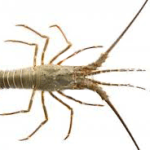
Acanthaster planci
Sea stars (group name Stelleroidea), are sometimes called starfish, though lacking both vertebrae and fins, they are not real fish. There are two sub-types of sea stars: Asteroideas are the true sea stars and sun stars, whereas Ophiuroideas are brittle stars and basket stars.
Ophiuroid means ‘snake-like’, referring to the form and motion of the arms. The arms of brittle stars are easily broken off, but will regenerate in a few days to weeks. Sea stars can also regenerate arms that are broken off, but for most species, the central region of the body must remain intact
Class Asteroidea, the true sea stars, contains about 1700 living species of these echinoderms. Unlike the superficially similar brittle stars, true starfish have no sharp demarcation between arms and central body, and they move using tube feet, or podia, rather than wriggling movements of the whole arms. Each arm, or ray has a light sensitive organ called an eyespot, enabling it to detect light and general direction.
Most starfish are predators, feeding on sessile or slow-moving prey such as molluscs and barnacles. A few species, such as the spiny star of the North Atlantic, eat other sea stars! Many, but not all, starfish are able to turn a portion of their stomachs out through the mouth (called eversion), and thus digest food outside of the body.
This star-shaped carnivorous animal is usually a dull yellow or orange, but can also be brightly coloured. As a natural defence mechanism, the starfish is able to change its body color to hide or escape from predators.
Starfish vary greatly in size from a few centimetres over one metre. The arms of the starfish are used for movement, catching prey and digestion. Unlike other animals, the starfish is able to grow a new arm if one is lost. Many starfish have five arms, but there are some deep-water species that carry more than fifty.
The crown of thorns starfish (Acanthaster planci) – so named because it has spiny arms radiating from a central disk that resembles a crown – is a true sea star and is the largest and probably the most poisonous sea star in the region. It grows up to 50cm in diameter and feeds on fast-growing coral polyps.
When occurring in balance within the coral habitat, it plays a central role in the lifecycle of the reef. However when populations explode, the starfish present a real threat to the reef, because it is moves to feed on all types of coral when it has exhausted stocks of its preferred species – fast growing staghorn and plate corals. A single starfish can devour as much as 50 square cm of coral a day. The duration of outbreaks on individual reefs can vary widely The duration of an outbreak probably depends on the size and shape and general health of the reef, the number of starfish in the population and certain environmental factors. Whilst some outbreaks have lasted for 4-5 years, others have been exhausted within 1-2 years.
The crown-of-thorns starfish is sinister yet beautiful in appearance, being covered by a large number of 4-5 cm long, very sharp spines which can produce a toxic and inflammatory reaction if touched. This starfish is multi-coloured and ranges in colour from purplish-blue with red tipped spines to green with yellow-tipped spines. Their colour may change somewhat depending on diet and the degree to which hair-like projections (papulae) extend from the skin.
The crown-of-thorns starfish prefers to live in more sheltered areas such as lagoons, and in deeper water along reef fronts.








Social Profiles